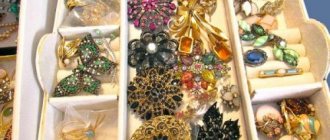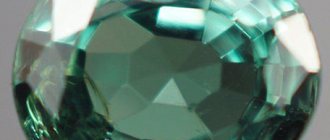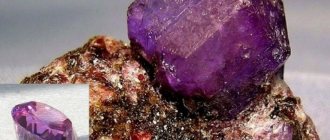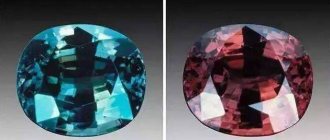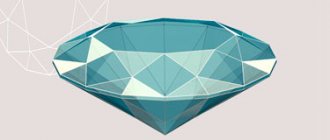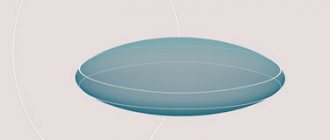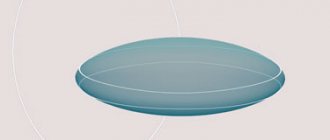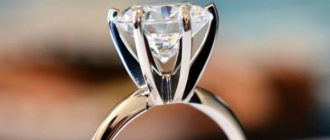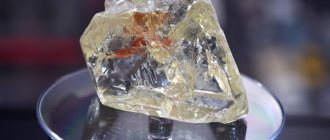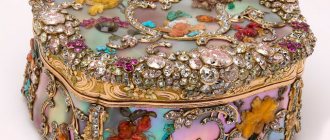Greetings friends! Do you know what is the difference between a diamond and a diamond? Or maybe they are one and the same? I will tell you all the most interesting things about how a diamond is transformed into a brilliant, what path it takes and by what criteria diamond cutting is assessed in the modern world, in Russia and in the West.
A diamond is a diamond, only after it has been cut. There are a lot of finishing variations. But I especially want to highlight the so-called rocks. This finishing is also used, but not so often.
A brilliant cut is not a nugget shape. The name comes from the word “face”, and therefore means the number of faces and location. In simple words, this is nothing more than polishing. The ability of the nugget to reflect light and please the eye will depend on its quality and character. Do you know who developed the classic diamond cut, which is still used today, how it is classified and does it affect the cost of the breed? The most interesting things are below!
What makes this stone so unusual and valuable?
It's not just its weight, color and purity. In order for a cloudy diamond to sparkle with its ideal facets, real skill and talent of cutter jewelers is required. The shape of the future diamond is chosen with special care to be able to demonstrate the full potential of the stone.
Today, about 15 cutting options are known, and each of them has its own characteristics. However, it is worth remembering that human imagination is limitless and in the future, more than one, no less spectacular and interesting form will probably be invented, which will give enthusiastic diamond admirers thousands of sparkling facets.
Buy color G or aim higher?
Generally, if you want the best and have the money to buy a colorless stone, it is up to you to decide whether you want a diamond in the DEF range. However, if you don't mind saving money, the G stone will serve you just as well.
It should be kept in mind that the only time someone will be able to tell the difference between a G and a colorless diamond is when they are placed next to each other and compared.
Even then, you will have a very hard time telling the difference, and chances are no one will be able to tell what grade your stone is when you wear it.
If you are setting your diamond in a non-ferrous metal such as yellow gold, how colorless the stone is will matter even less because the reflection of the setting color will make the stone appear slightly colored.
In this case, don’t bother paying extra for colorlessness. In fact, you can safely choose colors even lower than G—I or J, for example, can be just as good for colored frames.
Round classic cut
The familiar round shape of a diamond is recognized as the most beautiful, capable of presenting the stone most advantageously and effectively. A regular round cut diamond has 57 facets.
Advertising - Continued below
For very small stones, a simplified cut of 17 facets is used, and for the largest stones there are options with 74, 86 (royal cut) or 102 facets (majestic).
Emerald cut and clarity.
The clarity of an emerald cut diamond affects its brilliance. And the shine is stronger, the higher its purity.
The presence of yellow shades and various inclusions will negatively affect the shine of the stone surfaces. These inclusions, due to the peculiarities of this cut, will be noticeable even to the naked eye.
It is not advisable to select a clarity of an emerald cut diamond lower than VS. Diamonds with SI1 and SI2 clarity are not suitable.
Bottom Line: So, to make sure you get a flawless diamond with the best sparkle, you need to choose a stone with an H or G color and a clarity in the VS1-VS2 range. Make sure the diamond depth percentage is 60% - 70%.
Princess cut
Another very popular diamond cut. It became an evolutionary form of the Baryon and Quadrillion cuts.
Thanks to the large number of facets (up to 68), the “Princess” is almost as good as the round shape in terms of the “play” of light in the stone, and given its more affordable price, it is becoming increasingly popular and interesting to a wide range of buyers.
Advertising - Continued below
The advantage of the square shape is that, compared to the round shape, much less raw material is lost during the cutting process.
Main types of diamond cuts
The list of diamond finishes has been updated with new names today. These are the forms:
- Round;
- Princess;
- Oval;
- Pear;
- Marquis;
- Emerald;
- Radiant;
- Asher;
- Trilliant;
- Baguette;
- Heart.
Classic - round shape. During processing, the mineral loses a lot of weight. According to statistics, 75% of precious stones sold are round cut. The basis of the form is the crown, girdle pavilion. The number of faces is 57-58. The maximum effect can be achieved by maintaining the proportions.
The Marquis is an example of a fantasy form. Visually, such a stone resembles a boat based on a wedge cut. Another wedge shape is a pear or a drop. One of the favorites among connoisseurs of diamonds in pendants and pendants.
The oval shape is based on a wedge cut. Suitable for large nuggets and almost all types of products.
Princess is a square or rectangle shape with clear corners. A stone in this treatment gracefully plays with light; it is often used as a mono-insert in pendants, rings and brooches.
An example of a stepped rectangular finish is emerald. The pebbles are shaped into an octagon with softened corners. A variety of emerald form is Ascher. The cut combines newfangled technologies and medieval charm.
The radiant gives rocks the shape of a rectangle or square with an octagonal outline. A cross between a round diamond and an elegant emerald.
A striking example of a fancy cut is the heart. Heart-shaped stones look touching and romantic. In essence, this is a nugget in the shape of the same Drop or Pear, split in two in the head area.
Trilliant is a triangle-shaped stone with a different number of sides. It changes depending on the master’s idea and the characteristics of the nugget. Ideal for rocks as side inserts on rings with a large nugget in the center.
Baguette is another example of a step cut. The shape is close to a square, trapezoid or rectangle.
How is the cut category designated?
You can figure out the type of diamond finish and the characteristics of the stone in a product yourself if you know exactly what the list of numbers on the tag means.
Let's practice together. Let's take as an example a product - a ring with an insert of diamonds. The label says: 8 Br. Kr 57-1.03 4/6. What does it all mean? The first number - 8 - is the number of diamonds in the product. Kr means round cut. 57 is the facets, 1.03 is the total mass of the stones, 4 and 6 are the quality of the color and structure of the nugget. The higher these numbers, the further the color is from the most expensive colorless, and the surface from flawless. The number 6 indicates the presence of defects: chips, cracks, etc. Visually, they are almost invisible, especially to a non-professional.
The quality of the cut is determined by the designation, also written in the documentation for the product. The generally accepted global assessment system involves division into:
- Excellent;
- Very good or good (Very Good, Good);
- Average (Fair);
- Unsatisfactory (Poor).
In Russia, finishing is divided into categories designated by letters:
- A (best);
- B (good);
- B (satisfactory);
- G (bad).
If we compare both classification options, the Russian one is more strict. Diamonds rated “Ideal” in the West can be rated “Good” or even “Satisfactory” with us. The quality of polishing, proportionality and number of edges are assessed.
In general, the main criterion for evaluating processing is human perception. It is important that you like the nugget and impress with its ability to play with light. It happens that a diamond meets the highest standards according to the evaluation scheme, but does not evoke positive emotions among buyers. Therefore, you need to focus on certificates with expert assessments, but it is better to make your choice based on your own impressions.
Marquise cut (Marquise)
It is believed that the cut received its name in honor of the favorite of Louis XV, the Marquise de Pompadour, or more precisely, her smile.
A diamond of such an unusual elongated shape is able to visually lengthen the fingers of its owner, giving them a more graceful appearance. The cut has 55 facets. More information about “Marquise” can be found in this article.
Advertising - Continued below
The most important quality characteristics.
To determine the characteristics of this stone, we need to take a closer look at the characteristics that you should pay attention to when evaluating this type of cut.
The most important characteristics for evaluating a diamond of this cut are its girdle, length to width ratio, percentage of depth and table, presence of a culet, and its size, if any.
Before purchasing such a diamond, it is important to know how this type of cut is measured and what its measurements mean.
Princess cut diamonds are usually measured to determine how close their dimensions are to ideal proportions. While there are no strict standards for the proportions of an ideal princess cut, there are some general guidelines. Knowing the dimensions will allow you to calculate some important ratios and compare them with the standards for that cut.
Let's take a closer look at these quality characteristics:
Belt
The diamond's belt is its widest part. The thickness of the belt is measured vertically, so you will simply need to determine its height.
This outer edge may have a thickness grade that ranges from very thin to very thick. For princess cut diamonds, the optimal belt thickness ranges from very thin to thick.
Diamonds with very thick bands are undesirable because their other proportions are distorted by the overly large band.
Extremely thin belts should also be avoided because they are vulnerable to chipping.
Length to width ratio
The length to width ratio tells you how close the diamond is to a square shape. Length and width are measured along the waist.
Typically, the length to width ratio in princess cuts is around 1-1.1. Values closer to 1 are more desirable for this type of cutting, while ratios above 1.1 are less desirable.
Depth percentage
This value is calculated by dividing the depth of the stone by its width.
It is best if this value is between 65% and 75%. Values in the ranges of 58%-64% and 75%-80% are also considered good.
Depth percentages below 58% and above 80% are considered fair or poor quality.
Site percentage
The platform is a rectangular flat face on top of a stone. (Its width is less than the width of the entire diamond). To determine this value, you must measure one of the sides parallel to the width of the diamond.
The landing percentage is calculated by dividing the width of the topmost face (platform) by the width of the stone, measured along the girdle.
A value of 60%-75% is considered best for a princess cut. Diamonds with values in the range of 75%-80% or 56%-60% are also considered well-cut.
In general, avoid cuts that have a site percentage higher than 85% or lower than 55%.
Kaletta
The culet is the small flat face on the bottom of the diamond. Often the culet is missing and the bottom is just a pointed end.
It is better if the culet is small or absent altogether. (Some people prefer to have a culet because they think the sharp diamond bottom is more likely to break).
Medium and large culets are undesirable, as they are too noticeable when looking at the stone from above and spoil the appearance of the site.
Oval cut
It is related to the round cut, but often looks more advantageous due to the larger top plate at the same weight.
An additional advantage is that a stone of this shape looks good even on a hand with not very long fingers, as it visually stretches them. Has 57 edges.
Advertising - Continued below
What is the difference between grade G and DEF?
Let's see how the G diamond compares to the Colorless varieties. It is true that grade G is more colored than D, E or F, but this difference is only noticeable when the stone is viewed from the side.
Even then, any change in color is very difficult to make out, and you have to have very sharp eyesight indeed to notice the difference. And when viewed from above, a G diamond is almost as colorless as DEF stones.
Overall, to the average client, a G diamond is virtually indistinguishable from the colorless range when viewed with the naked eye.
Advantage of G-color diamonds.
We can confidently say that G-stones look colorless to most people, but is there anything that makes them a better choice than diamonds with higher color quality?
Perhaps the biggest difference for G-stones is the price - these diamonds are cheaper than diamonds in the Colorless range, and the difference can range from several hundred to several thousand dollars.
If you have determined that your budget allows you to go no higher than the Near Colorless range, a G graded diamond is the closest to the Colorless group, but without the significant price tag.
Emerald or Asscher cut
The “emerald” cut is most often used on fairly large stones and, due to the large size of the upper platform, is a very “open” shape.
For this reason, any visual defect in the stone will be very noticeable, which means that this cut should only be used on high-quality diamonds. In this article you can learn more about the emerald cut and admire the most beautiful diamond rings of this shape.
Advertising - Continued below
The Asscher cut was invented by the Asscher brothers of Antwerp in 1902. Its main difference from “Emerald” is its square shape.
However, “Asher” also allows the use of this form only on stones of ideal purity.
Color assessment.
As described above, emerald cut diamonds do not have enough brilliance or brightness to hide or lessen their yellow tones.
Therefore, when buying a stone with such a cut, you need to pay special attention to the purity of its color and transparency.
On the diamond color scale, emerald cut colors are suitable for colors in the higher category.
Such a stone will glow more than if you choose a color of a low category, with yellowish tints. The yellowish color will make the shine of the stone more subdued.
The GIA (Gemological Institute of America) grades diamond color using letters, with D being the highest grade and Z being the lowest. These letter designations are in turn grouped into color ranges.
The top three grades (D, E and F) make up the Colorless range. Diamonds classified as one of the following four grades (G, H, I and J) are considered Near Colorless.
The other three ranges are Light Yellow (contains grades K, L and M), Very Light Yellow (N, O, P, Q, R), and Light Yellow (S to Z).
